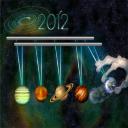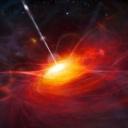Yahoo Answers is shutting down on May 4th, 2021 (Eastern Time) and beginning April 20th, 2021 (Eastern Time) the Yahoo Answers website will be in read-only mode. There will be no changes to other Yahoo properties or services, or your Yahoo account. You can find more information about the Yahoo Answers shutdown and how to download your data on this help page.
Trending News
How do black holes form?????
I read that black holes can form from collapsed stars, and that they are a large amount of matter condensed down in the center which is what gives them such a gravitational pull.
Stars, I don't think, have enough mass make a black hole with a gravitational pull extreme enough to pull in light. How does that work?
And how, when a star (or whatever) does collapse, why doesn't it just explode and fall apart, how does it get from point A. Collapsing star - to point B. Condensed matter.
How much gravitational pull is needed for something to be considered a black hole. Enough so that even light can not escape? Or can one's with less amount of pull not form?
I'm just curious :) Thanks for any helpful answers
6 Answers
- ThatsMyTummyLv 48 years agoFavorite Answer
Once a giant star dies and a black hole has formed, all its mass is squeezed into a single point. At this point, both space and time stop. It's very hard for us to imagine a place where mass has no volume and time does not pass, but that's what it is like at the center of a black hole.
The point at the center of a black hole is called a singularity. Within a certain distance of the singularity, the gravitational pull is so strong that nothing--not even light--can escape. That distance is called the event horizon. The event horizon is not a physical boundary but the point-of-no-return for anything that crosses it. When people talk about the size of a black hole, they are referring to the size of the event horizon. The more mass the singularity has, the larger the event horizon. Many people think that nothing can escape the intense gravity of black holes. If that were true, the whole Universe would get sucked up. Only when something (including light) gets within a certain distance from the black hole, will it not be able to escape. But farther away, things do not get sucked in. Stars and planets at a safe distance will circle around the black hole, much like the motion of the planets around the Sun. The gravitational force on stars and planets orbiting a black hole is the same as when the black hole was a star because gravity depends on how much mass there is--the black hole has the same mass as the star, it's just compressed.
Black holes are truly black. Light rays that get too close bend into, and are trapped by the intense gravity of the black hole. Trapped light rays will never escape. Since black holes do not shine, they are difficult to detect.
- ?Lv 78 years ago
A black hole can, in theory, have any mass. Even tiny masses less than the mass of an electron.
Massive stars will inevitably form black holes. This is called the "Chandrasekhar Limit", and its proof requires General Relativity.
- 8 years ago
Black Holes are the result of a Neutron Star when collapses into a Super Nova and generates a Singularity
- JAMES KLv 78 years ago
First off, stars are extremely massive and large, much more so than you are willing to admit.
I refer you to such books as Asimov's Guide to Science 1972 or his The Measure of the Universe 1983. Doctor Asimov explained Astronomy and many other Sciences in language any layman can understand. He makes the obscure very clear.
You would do very well to assemble a library of his works.
- How do you think about the answers? You can sign in to vote the answer.
- 8 years ago
The most common theory is where a colossal star with a mass of more than 3 times the Sun’s reaches the end of its life, gets crushed under its own gravity, leaving behind a compact blackhole.
- MichaelLv 78 years ago
Ask Hollywood, since their the ones that came up with black holes in the universe. Mike
Source(s): Hollywood logic.










